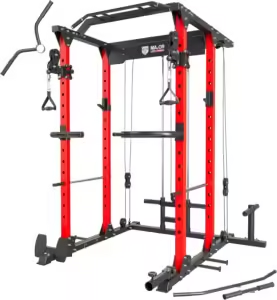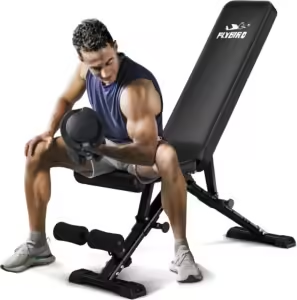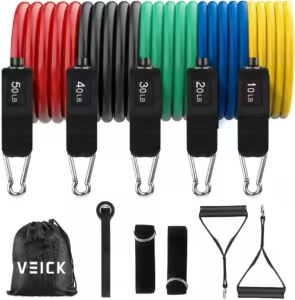Building your garage gym can be a game-changer for both fitness enthusiasts and beginners. Imagine having the convenience of working out at any time without the hassle of commuting to a commercial gym. Whether you’re looking to save money on gym memberships, create a personalized workout space, or simply enjoy the privacy of your own home, this guide will walk you through every step of building your garage gym.
Why Build a Garage Gym?
Creating a garage gym offers numerous benefits. A survey by the International Health, Racquet & Sportsclub Association (IHRSA) found that 63% of gym members would prefer to work out at home if given the option. Here’s why building a garage gym is a fantastic idea:
Convenience and Accessibility
Having a gym in your garage means you can work out whenever you want. There’s no need to adhere to gym hours or deal with travel time. This convenience can significantly increase your consistency and dedication to fitness.
Cost-Effectiveness
While the initial investment might seem steep, the cost of building a garage gym can save you money in the long run. Gym memberships can be expensive, and over time, the cost of monthly fees can add up. By investing in quality equipment upfront, you can eliminate these recurring expenses.
Customization
One of the biggest advantages of a garage gym is the ability to customize it to your liking. You can choose the equipment that fits your workout style and goals. Whether you’re into weightlifting, cardio, or functional training, your garage gym can reflect your personal preferences.
Planning Your Garage Gym
Before you start purchasing equipment, it’s important to plan your garage gym carefully. This involves considering your fitness goals, available space, and budget.
Assess Your Space
The first step is to evaluate the space you have available in your garage. Measure the dimensions of the area and take note of any obstacles like shelves, windows, or doors. Make sure you have enough space for the equipment you plan to buy and for moving around comfortably.
Set a Budget
Your budget will play a significant role in determining the type and quality of equipment you can purchase. While it’s tempting to go all out, it’s important to stick to a budget that you can afford. Remember that you can always add more equipment over time.
Define Your Fitness Goals
Understanding your fitness goals will help you choose the right equipment. Are you looking to build muscle, improve cardiovascular fitness, or enhance flexibility? Your goals will dictate the type of equipment that will be most beneficial for you.
Essential Equipment for Your Garage Gym
Now that you’ve planned your gym, it’s time to consider the essential equipment you’ll need. Here are some key pieces of equipment to get you started:
Power Rack

A power rack is a versatile piece of equipment that allows you to perform various strength training exercises like squats, bench presses, and deadlifts. Look for a sturdy and adjustable power rack with safety features.
Barbell and Weight Plates

A high-quality barbell and a set of weight plates are crucial for strength training. Opt for a barbell that can handle heavy loads and weight plates that are durable and easy to handle.
Dumbbells

Dumbbells are essential for a wide range of exercises targeting different muscle groups. Adjustable dumbbells are a great space-saving option as they allow you to change the weight easily.
Cardio Equipment
If cardiovascular fitness is one of your goals, consider adding a piece of cardio equipment like a treadmill, stationary bike, or rowing machine. Choose equipment that fits your space and workout preferences.
Weight Bench

A weight bench is essential for exercises like bench presses, step-ups, and seated exercises. Look for an adjustable bench that allows you to perform a variety of exercises at different angles.
Resistance Bands

Resistance bands are versatile, affordable, and great for adding variety to your workouts. They can be used for strength training, stretching, and rehabilitation exercises.
Setting Up Your Garage Gym
Once you have your equipment, it’s time to set up your garage gym. Follow these steps to create an efficient and motivating workout space:
Organize Your Space
Start by decluttering your garage to create a clean and organized space. Remove any unnecessary items and make sure the area is well-ventilated and well-lit. Consider installing storage solutions like shelves or racks to keep your equipment organized.
Flooring
Investing in proper flooring is crucial for protecting your equipment and reducing the risk of injury. Rubber flooring or foam mats are excellent options for a garage gym. They provide cushioning, reduce noise, and protect your floor from heavy weights.
Lighting and Ventilation
Good lighting and ventilation are essential for creating a comfortable workout environment. Ensure your garage has adequate lighting, and consider adding fans or a ventilation system to keep the air fresh and cool.
Create Zones
Organize your gym into different zones based on the type of workout. For example, you can have a strength training zone with your power rack and weight bench, a cardio zone with your treadmill, and a stretching zone with your resistance bands and foam roller.
Safety Considerations
Safety should always be a priority in your garage gym. Make sure all equipment is set up correctly and securely. Use safety bars and clips for your weights, and always warm up before starting your workout. Keep a first aid kit nearby and have a phone accessible in case of emergencies.
Maximizing Your Garage Gym Experience
To get the most out of your garage gym, consider these additional tips:
Follow a Workout Routine
Having a structured workout routine will help you stay consistent and track your progress. Consider hiring a personal trainer or using online resources to create a program that aligns with your goals.
Stay Motivated
Staying motivated can be challenging when working out at home. Keep your gym space inspiring by adding motivational quotes, posters, and music. Set achievable goals and reward yourself for reaching milestones.
Keep Your Gym Clean
Regularly clean your equipment and gym space to maintain a hygienic environment. Wipe down equipment after each use and periodically deep clean your gym to prevent the buildup of dust and bacteria.
Track Your Progress
Tracking your progress is essential for staying motivated and making adjustments to your workout routine. Use a fitness app or journal to record your workouts, track your progress, and celebrate your achievements.
Conclusion
Building your garage gym is a rewarding investment in your health and fitness. By following this comprehensive guide, you can create a personalized workout space that fits your goals, budget, and lifestyle. Remember to plan carefully, invest in quality equipment, and stay consistent with your workouts. With dedication and perseverance, your garage gym can become a powerful tool for achieving your fitness goals.